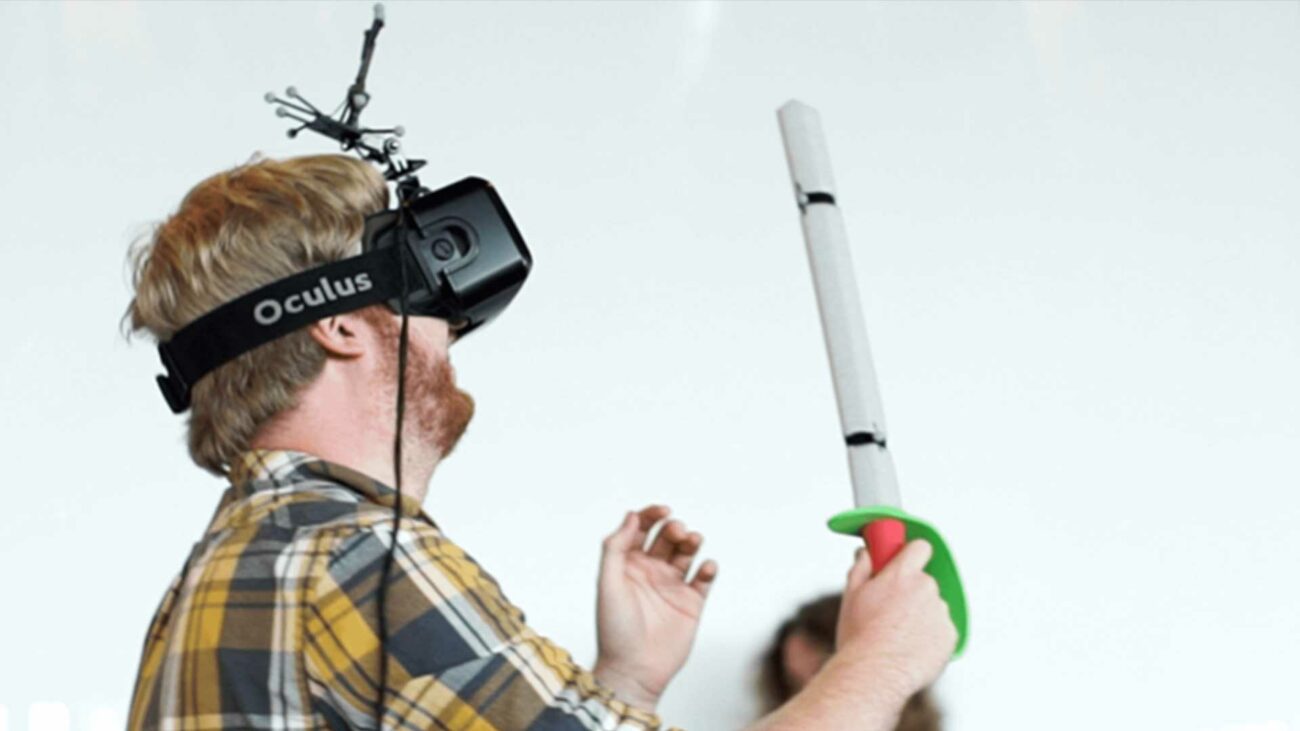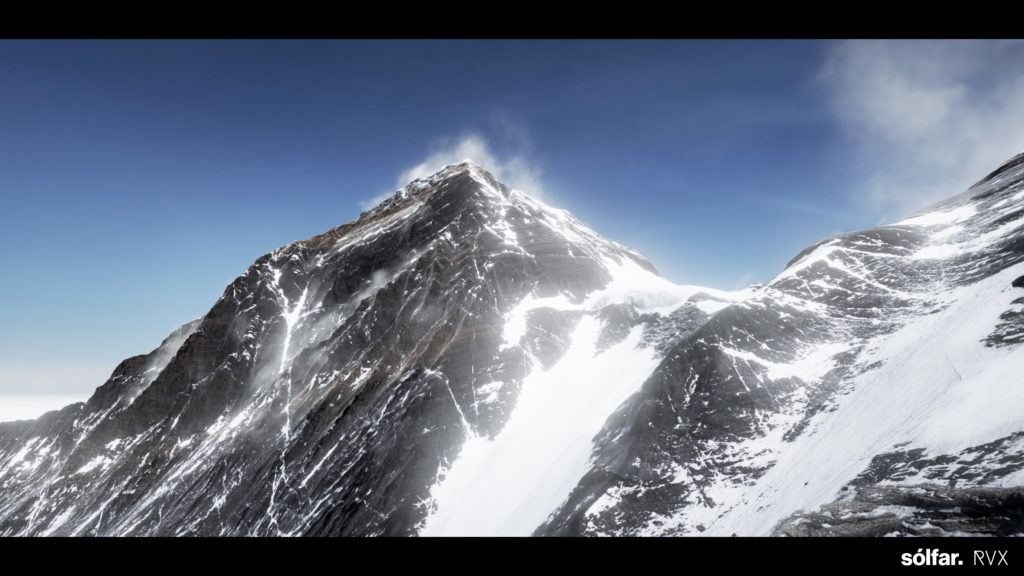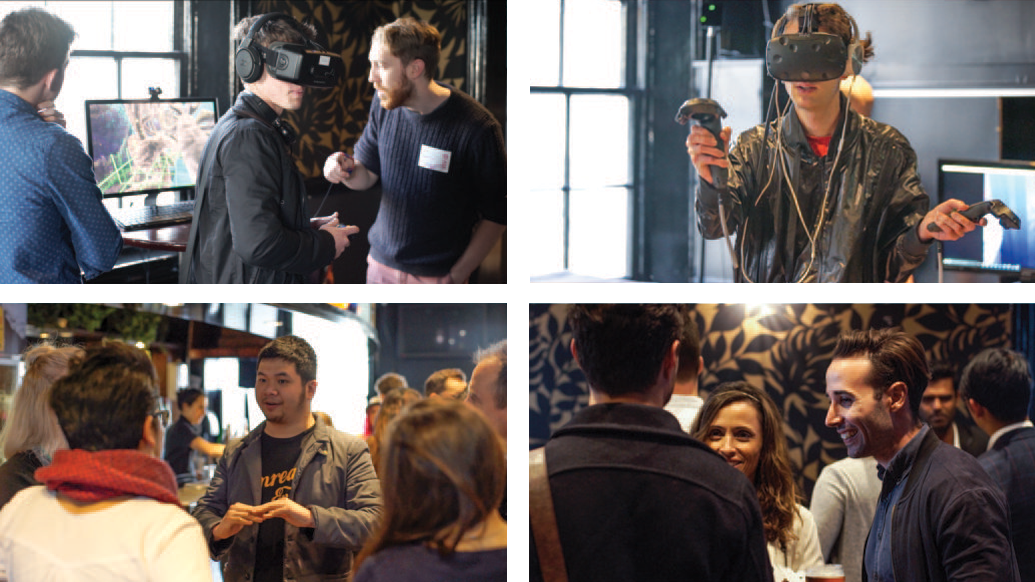
The event
Our sold-out Vivid Ideas event Storytelling in a Virtual World gave attendees a crash course in understanding virtual reality better to create valuable content and achieve success. If you’ve missed out on Storytelling in a Virtual World, here’s an article on AdNews or read on for the keynote recap.
To kickstart the event, we presented a sword fighting virtual reality experience using OptiTrack motion capture technology, showing an interactive VR experience with haptic feedback.
Chris Panzetta: Inventing the medium
Chris and the S1T2 team were asked by The World Bank to tell their stories of conflict through virtual reality.

Solomon Islands: Evangeliza is a nine-year-old living in nature’s paradise, she just finished her first week of school, but her family is struggling to continue to put her through schooling.
Papua New Guinea: Timothy lives in a small village that conflict has torn apart, now he works with his enemies to find peace.
Myanmar: Lulu lives in an internally displaced person (IDP) camp, her road home is littered with landmines and the government has taken over her village.

The Price of Conflict, The Prospect of Peace tells stories through virtual reality. Because the frame isn’t enough to tell the story, you need to be there to get to see the effects of conflict for yourself.
As humans, we use stories to understand the world. Stories need not be accurate, but they need to be coherent. Story comes first, technology second and only as a tool to enrich our understanding.
A legacy medium such as film didn’t define movies, it’s something that has evolved over time. And presently, virtual reality sucks at story, although we can see what’s next and where we’re heading, it’s hard to say how long it’ll take to get there. We are here to invent the medium.
Norman Wang: Immersion, a new dimension of storytelling
As storytellers, it’s important to understand the unique capability of the artform we’re using – whether it’s a film, image, or a painting. Every artform empowers artists with different forms of expression.
Presence, alterity, and agency combine to make virtual reality a unique form of expression.
Presence is a feeling as if you’re somewhere else. In outer space or on Mount Everest.

Alterity is feeling as if you’re someone else. Being an astronaut in Earthlight, being an abortion patient in Across the Line.

Agency is your ability to influence the world, knowing your actions have consequences. Virtual reality gives us the ability to tell stories that are otherwise impossible.

Mariana Acuna Acosta: Viewing the camera as your audience
I think we’re moving into a dangerous medium with virtual reality, the only reason I say it’s dangerous is because it gives the viewer a lot of latitude not to take direction from the storytellers but make their own choices of where to look.
Is he just afraid of losing control as a director?

A film, for the most part, is linear, you need a beginning, middle, and end. The camera can force you to focus on things by zooming in or by panning. With virtual reality, the camera is your audience and in 360 degrees. The opportunity with virtual reality comes from the possibilities where you relinquish control that in turn make an emotional and personal impact.
Storytelling in virtual reality looks a lot more like a graph. Adapting concepts from game design to virtual reality, you can think of the player as a witness, victim or killer. Are viewers gonna be active or passive participants? How will their actions have an impact in the VR world?
Mariana’s Recipes for the Finest Virtual Reality Experiences
- Motion sickness – When your tripod is not stable when your rig isn’t robust enough. Once your horizon starts becoming shaky, you’ll make people sick.
- Presence – What people see and hear have to match up to make you feel like you’re actually transported to a different place.
- Scale – Go for what’s right for your story, always consider what height you’ll be positioning the camera at. Consider what makes sense for your story.
- Timing and spatial awareness – Give people time to adjust to the environment. Think spatially, try to picture where your foreground, middle, and background elements are going to be placed and their relation to each other at your chosen location.
- Audience – You know nothing about your audience, the way they might view the experience that you’ve created could be entirely different from the way you intended for them to.
- Composition – Because it is 360, your shot needs to look good from every angle.
- VR is forced intimacy – What’s the sensation you want people to feel as soon as you put on a headset?
- Audio – binaural or ambisonic, it increases your sense of presence and it can become a major guide for story progression.
- Resolution – at the very least, 4k, 6k is better, 8k is ideal for ambisonic audio.
We are in a time that we’re not to copy old rules but to challenge and innovate them to this new exciting medium.
I am convinced that this is not going to be an extension of cinema or 3D cinema or video games, it is something new, different, and not experienced yet.
Dr. John McGhee: Narrative approaches in human scan data visualisation
Healthcare is arguably one of the most interesting and innovative applications of virtual reality. Through two projects, Topologies of Stroke and Journey to the Center of the Cell, Dr. John McGhee and his team have gone in depth and inside the human body to better educate patients and med students.
These experiences both start with a storyboard to map out the narrative and parameters of the experience. Controllers allow people to navigate through the experience in their own time through the human body.

In his first project, Topologies of Stroke, people are taken inside 3D modeled blood vessels in the human brain. Initially, a raw model was made, but with the addition flowing red blood cells flowing, textures, and light, people were in a better position to understand the story and which direction to navigate in.
Since the human body isn’t meant to be traveled in, it would’ve felt a bit nauseating being confused and not knowing where you’re going or being directed. They created a ladder to help people find their way through the experience. A digital breadcrumb was also created inside the experience as a map to understand where you’re at in the human brain.

Journey to the Center of the Cell is a developing project to better educate med students on what happens inside the cell. They can zoom in and out of the nucleus and teleport to different locations in the cell.
Wrapping up

These pioneers have started unearthing the path for virtual reality, it’s the new wild west where there aren’t hard sets of rules. But it’s a rich start as we continue exploring and navigating the affordances of this new medium.
Virtual reality showcase
Following the talk, there was a virtual reality showcase where people got to try some of the virtual reality experiences from the talk – The World Bank: The Price of Conflict, The Prospect of Peace, and HTC Vive Castle Sword Fight by S1T2; Topologies of Stroke and Journey to the Center of the Cell by Dr. John McGhee.








